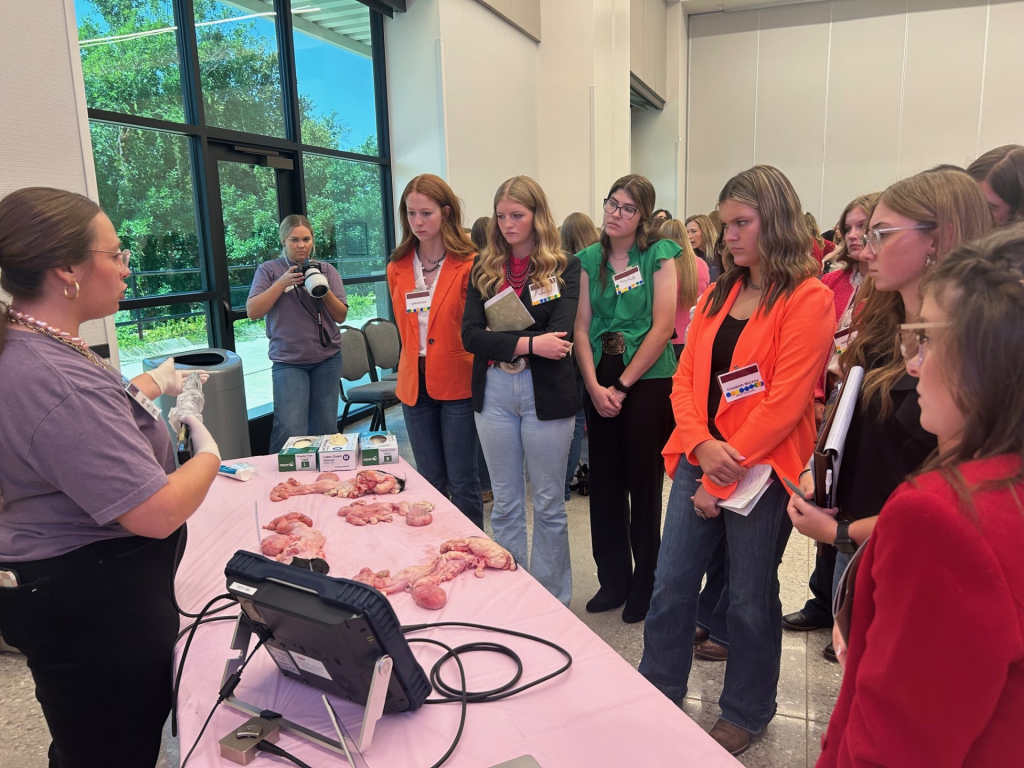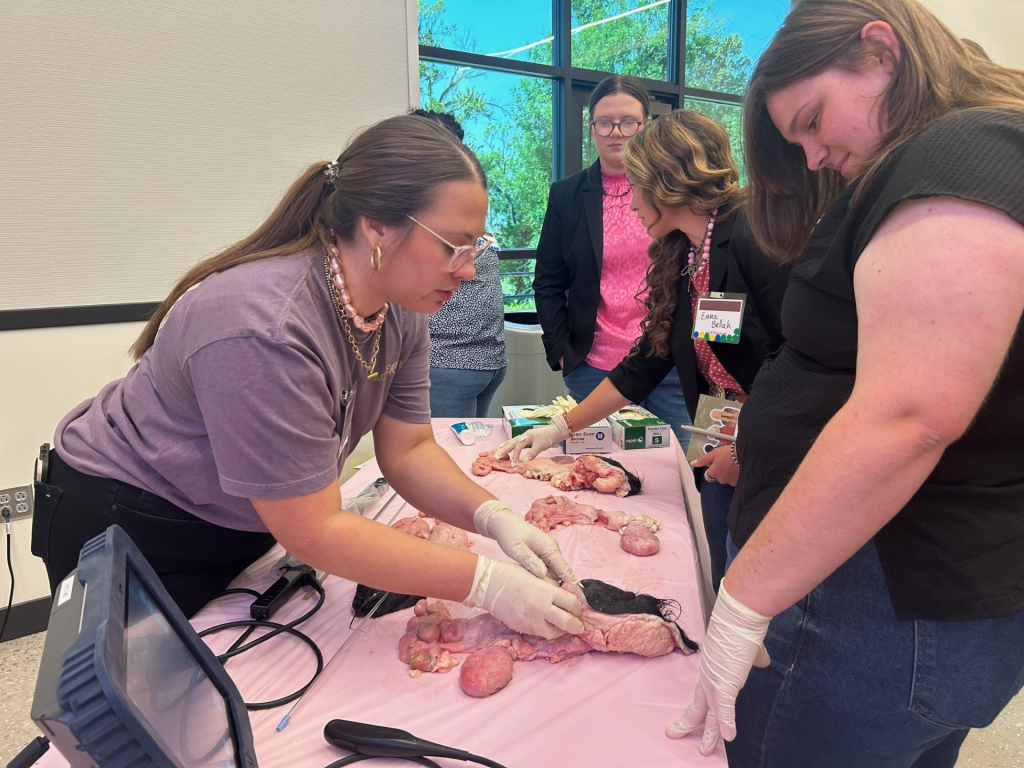
At the Agherculture Conference, associate farm reporter Carli Davenport spoke with Dr. Mandy Tolar, a mixed animal practitioner specializing in advanced reproductive technologies, who led a hands-on session on cattle reproduction. “We were showing the girls how we aspirate oocytes,” she explained. “We talked a little bit about what the cow’s reproductive cycle looks like, and how different hormones affect different areas of that. Based on those things, what we’re feeling internally when we’re feeling that reproductive tract and then showing them on the ultrasound, what different parts of that look like.” Participants even got to glove up and practice the techniques for themselves.
When asked about her journey into veterinary medicine, Dr. Tolar described how her interests evolved. “I had always liked math and science and knew I wanted to do something in the medical field,” she said. But her path shifted in high school after being exposed to FFA. “I saw the impact that a local veterinarian could make on my projects and in a production setting, and I really got interested in the animal agriculture side of things.” That early inspiration carried her into Oklahoma State University, where she pursued animal science and discovered her passion for cattle reproduction.
Internships helped her refine her focus. “I was really drawn to reproduction, specifically on the cattle side of things,” she shared. “I did some internships to further elaborate on that knowledge, and just fell in love with the industry and what that could look like and the value that it could add to a production operation.” That combination of education and hands-on experience convinced her that advanced reproductive technologies were where she could make the biggest impact.

For Dr. Tolar, the excitement lies in tailoring reproductive technologies to producers’ needs. “I think the most exciting thing is being able to assist farmers and ranchers on what it looks like for their specific operation, whether that’s they’re looking to advance their genetics in their herd, or if they’re looking to produce a certain product to sell,” she explained. “We’re able to utilize different technologies in reproduction to get them that end product, whether that’s using sexed semen or being able to create more embryos of a certain gene pool by utilizing those technologies that we have available to us.”
Looking ahead, Dr. Tolar is optimistic about the future of veterinary medicine in Oklahoma. “I think as veterinarians, we just have a really unique opportunity to work closely with those producers,” she said. She also pointed to new investments in veterinary education. “Especially in the state of Oklahoma, after getting funding passed for a new teaching hospital, I think the future is really bright. I think that it’s going to continue to pull students from Oklahoma, as well as elsewhere, as we continue looking to bridge the gap for rural practitioners and having facilities here in our state to be able to produce those future veterinarians to come back to Oklahoma and practice in those rural communities.”

















